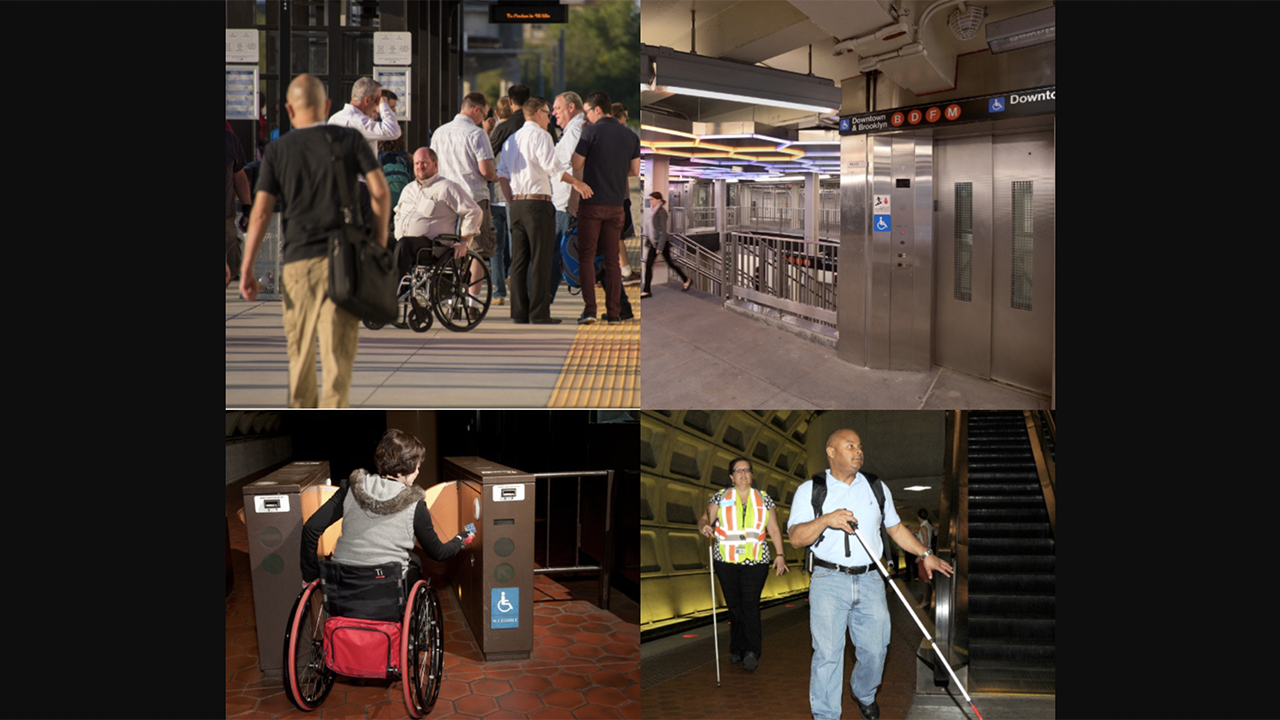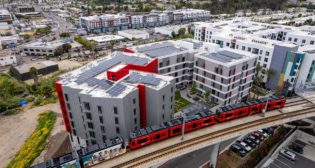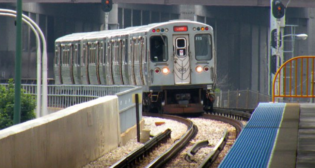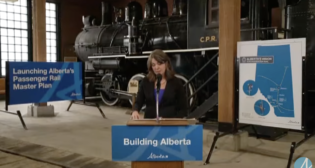
FTA: $343MM Available for Rail Transit Accessibility Projects
Written by Marybeth Luczak, Executive Editor
(Photographs Courtesy of FTA, via social media platform X, formerly known as Twitter)
Transit agencies may now apply for Fiscal Year 2024 grants to improve subway, commuter rail and light rail system access for people with disabilities and mobility needs. The Federal Transit Administration’s (FTA) All Stations Accessibility Program (ASAP) is making available $343 million; applications are due by Jan. 30, 2024.
Funded by the Bipartisan Infrastructure Law (BIL), ASAP supports “capital projects to upgrade the accessibility of legacy rail fixed guideway public transportation systems for people with disabilities, including those who use wheelchairs, by increasing the number of existing stations or facilities for passenger use that meet or exceed the new construction standards of title II of the Americans with Disabilities Act of 1990 (42 U.S.C. 12131),” according to the FTA. Projects include: repairing, improving, modifying, retrofitting, or relocating infrastructure of stations or facilities for passenger use, including load-bearing members that are an essential part of the structural frame; and developing or modifying a plan for pursuing public transportation accessibility projects, assessments of accessibility, or assessments of planned modifications to stations or facilities for passenger use or programs of projects in an eligible area.
The FTA said the federal share is not to exceed 80% of the net project cost for capital expenditures.
FTA awarded 15 ASAP grants totaling $686 million in nine states in 2022, using FY22 and FY23 BIL funding. Among them:
- New York Metropolitan Transportation Authority received $254 million to make its Myrtle Avenue, Norwood Avenue and Avenue I subway stations in Brooklyn and the Burnside Avenue subway station in the Bronx fully accessible, allowing safe and convenient travel to and through the stations. Modernization work will include installing elevators, updating platforms to reduce gaps, add tactile platform edge warning strips, modifying fare gates, stairs, and improving handrails.
- Chicago Transit Authority received more than $118 million to modernize the Irving Park, Belmont, and Pulaski stations to make them fully accessible, allowing safe and convenient travel. Built more than 50 years ago, the stations will be modernized with elevators, ramp upgrades, improved station signage, and general station enhancements.
- Southeastern Pennsylvania Transportation Authority received $56 million to make its 11th Street subway station on the Market-Frankford Subway Line and the Chinatown, Erie, Fairmount Upper Level, Fairmount Lower Level and Snyder stations on the Broad Street Subway Line fully accessible, allowing safe and convenient travel. Modernization work at the stations, which were built in the early 20th century, will include installing elevators, general station upgrades, ramps, and making path of travel improvements.
- New Jersey Transit received $34.1 million to make upgrades to five train stations, including $18.2 million to improve the Anderson Street-Hackensack and New Bridge Landing stations on the Pascack Valley Line to make them fully accessible. Improvements will include installing high platforms, fully accessible ramps, tactile warning strips, accessible parking spaces and upgraded communications systems. $14.5 million will go towards improving the Bradley Beach station on the North Jersey Coast Line. Improvements will include installing high platforms, fully accessible ramps, tactile warning strips, accessible parking spaces and upgraded communications systems. And $1.4 million will go towards the study and design of new platforms at the Chatham and Orange stations on the Morristown Line. The studies will also propose implementation recommendations that could be applied to other inaccessible stations, according to the U.S Transportation Department.
- Massachusetts Bay Transportation Authority received more than $66 million in funding for accessibility improvements at Symphony station, which was constructed in 1941 and is one of downtown Boston’s last inaccessible underground Green Line stations.
“Transit is the great equalizer, but for too many people in some of our nation’s largest cities, that equalizer is unavailable to them,” FTA Administrator Nuria Fernandez said. “Now, more than 30 years after the passage of the Americans with Disabilities Act, the Bipartisan Infrastructure Law is leveling the playing field by ensuring greater access for those who rely on mass transit.”



